What Is Stand Up Pouch Design?
The stand up pouch design is the construction of flexible packaging that may stand on its own without external support. It is a hybrid of structural engineering and branding and usability, which is why the products of the food, personal care, and pet products industries are popular. A stand-up pouch is more than a container; it is a well-designed product that makes the product appealing on the shelf and easy to handle by the user. The choice of materials, zippers, or transparent windows, all the decisions determine their performance and perception. In the subsequent paragraphs, we are going to get into the design of a stand-up pouch that will be attractive, reliable, and in line with your brand’s objective.
Benefits of Stand Up Pouch Packaging
Stand up pouch packaging provides the beneficial and economical use of rigid containers by incorporating space-saving design, product protection, and consumer-friendly characteristics in one. By designing your own custom pouches, you optimize both the performance of your operation and the effectiveness of its user experience, so you can use your designs to be able to check out easily.
- ● Space-Saving and Cost Efficiency
The stand up pouches occupy less space in storage and transportation since they are flexible. They use less material and weigh less than traditional rigid packaging, therefore cutting shipping costs. Single-serve, or bulk artwork, allows brands to change pouch sizes so that less waste is generated and transportation is simplified. The compact size also makes it easier to handle, on retail shelves and in the home freezer.
- ● Consumer Convenience
Additional features include zipper closures, quick tear notches, and reclosable zippers that enhance accessibility and reusability. Pouches may have hang holes, euro holes, or fold lines to facilitate retail display and storage. Such minor yet practical details can be adapted at the level of design of your pouch production that adjusts more to consumer habits and expectations.
- ● Extended Shelf Life
High barrier pouch materials like polyethylene terephthalate prevent moisture and oxygen ingress. This is particularly crucial for food products as it maintains freshness and quality. Considering the right combination of materials preserves everything from snacks to health supplements that are marketed.
- ● Sustainable Options
Compared to rigid stand up pouches, fewer resources are used, and stand up pouches can be made with recyclable or compostable materials. This reduces environmental loads and performance is kept. QR codes or bar codes can also be used to convey sustainability credentials, so the pouches are not only efficient but also in line with the contemporary consumer values.
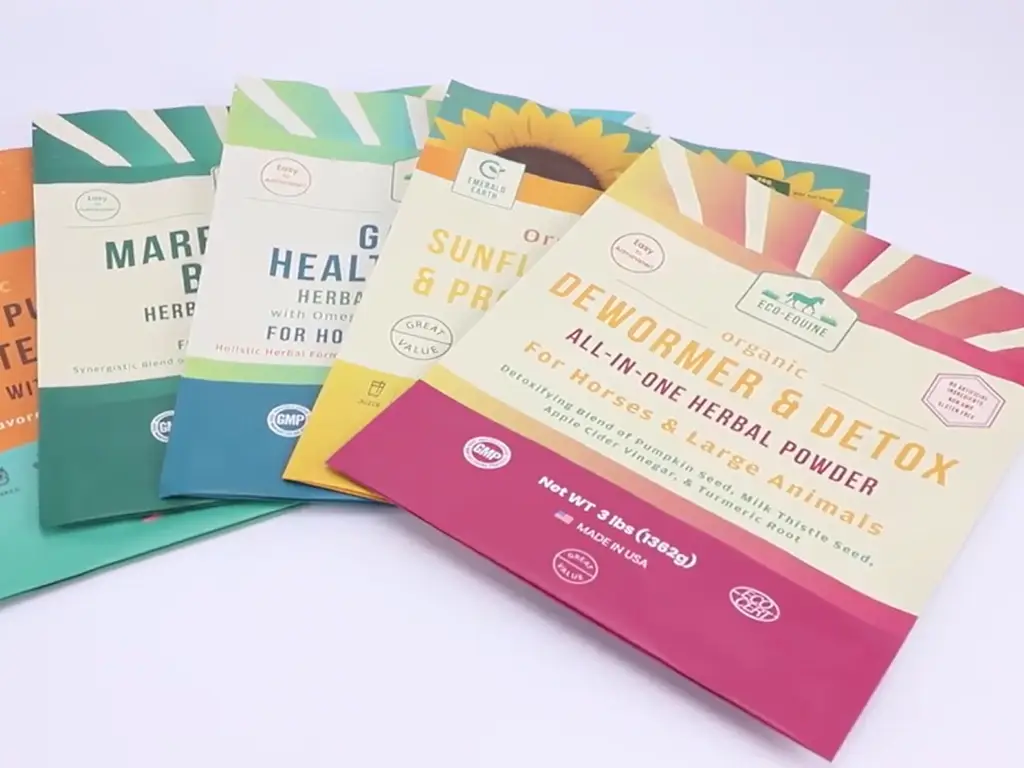
Key Components of an Effective Stand Up Pouch Design
Beauty and functionality are the main components of the effective stand up pouch design. Whether it’s snacks, supplements, or cosmetics, every design detail must factor into the consumer and product performance. As with every stand up pouch design, every detail from the structure to the pouch is crucial to ensure it is outstanding and not just average.
Front and Back Layout
As is common with pouches, vital branding information is conveyed on the front side. With the brand name, logo, and eye-catching graphics, windows, or text, the visual appeal is certainly captivating. First impressions are critical; thus, the design elements should be structured intuitively. The back side contains information relevant to the product: the ingredient list, how to use the product, and any relevant barcodes or QR codes alongside other regulatory details. Adhering to compliance and professional design standards creates a clean, structured arrangement, while directing attention to the center of the bottom section of the pouch ensures a balanced composition that avoids visual distortion.
Brand Recognition and Visual Hierarchy
A proper design of the pouch makes the brand recognizable at a glance. The logo must be noticeable and maintained, with most of the time it is at the upper third of the front panel. Font type and hierarchy are also used to direct the eyes of a viewer, whereby the name of the product is emphasized and other details are readable yet do not distract the viewer. When printing on clear film or white film, a well-applied layer of white ink can improve contrast and visibility, especially on transparent packaging.
Functional Features
Practical elements are also part of a strong pouch design. They are more usable with zipper closures and fast tear notches, making it possible to reseal and access it cleanly. When thinking about the holes, it is a good idea to remember about such hole options as round holes or euro holes that are flexible in displaying a product in the retail area. Additionally, it’s important to consider the shape of the product and the interior of the pouch when dealing with more voluminous or heavy contents, as a reinforced bottom gusset guarantees that the pouch will be upright and in shape—even after several uses.
Precision and Compliance
Technical elements and design visuals are interrelated. Each product has specific attributes that must be met, such as liquid volume, requiring specific bleeds, file types, and layout design. Selecting the right materials for the pouch, especially the best pouches approved for direct food contact, ensures the pouch’s design is visually appealing and functional in real-life circumstances.
How to Choose the Right Materials for Stand Up Pouch Design
Selecting the right materials for your stand up pouch design is perhaps the most important decision you make. It impacts everything from how well the product is preserved to how the consumer perceives it. A stand up pouch ideally balances the functional requirements of strength, durability, seal integrity, barrier protection, and preservation, with your brand’s aesthetic and sustainability goals.
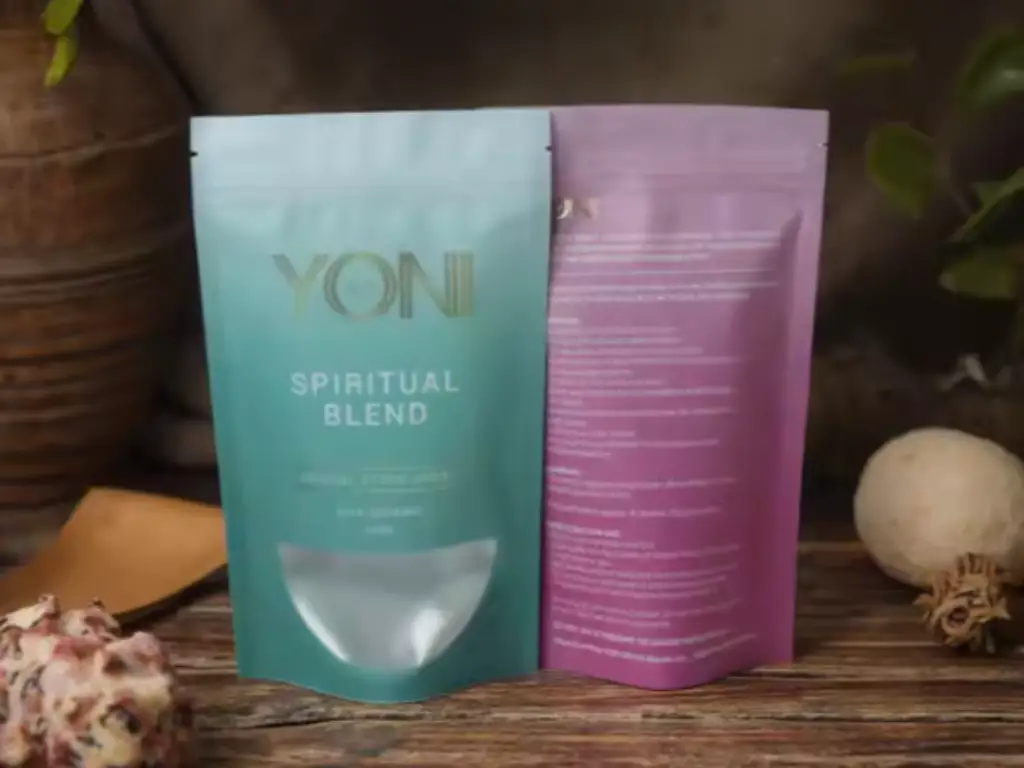
Common Material Options
There are several widely used materials in stand up pouch manufacturing:
- ● Matte film: It has a smooth and high-quality appearance and is not reflective, and is frequently found in cosmetics and high-end snacks.
- ● Gloss film: This is used to increase color vibrancy as well as shelf visibility, and it is mostly used on confectionery products or food products retailing.
- ● Kraft paper: A biodegradable, earth-friendly option, in combination with inner linings to enhance the barrier properties.
- ● Aluminum foil: Offers great light, moisture, and oxygen barrier, coffee, tea, and powdered supplements.
- ● PE (polyethylene): Used as a food-safe inner layer, it is used with other films for flexibility and sealability.
- ● PLA (polylactic acid): Biodegradable material applied in sustainable packaging, but not possessing good barrier characteristics.
Knowing and understanding the unique protective and printing abilities of each material helps you achieve the right balance of appearance, tactile elements, and functionality.
Match Material to Product Type
The kind of material that you use must correspond to the nature of your product. In direct contact with food, such as snacks or frozen foods, multilayer films containing polyethylene terephthalate or PE are recommended because they are puncture-resistant and moisture-barrier. Clear film or clear window pouches are suitable for products that need to be visible. In high-end skincare or protein supplements, the clean opaque finish white film or foil-backed laminates is an excellent foil to dramatic branding.
Best oxygen protection is needed to keep coffee, tea, and powders fresh, and this needs metalized films or foil layers. Cosmetics might benefit more from aesthetic finishes like matte or soft-touch laminates.
Barrier & Performance Considerations
Barrier ratings are used to measure functional needs, which include resistance to external moisture, light, and air. To enhance long shelf life, use high gas and vapor barrier materials. In case your product is to be stored in a home freezer or exposed to commercial deep freezing, make sure that the pouch can withstand cold temperatures.
In the case of liquid or semi-liquid contents, strength of materials, seal quality, and compatibility with impulse heat sealers become very vital. Such elements as liquid volume measurement or fluid ounces indications might guide the thickness and finish of the material, also.
The choices of materials are not only about the appearance of your stand-up pouch: they should promote performance, safety, and overall satisfaction of the users, providing a unique look that enhances the overall design. When you can match the design of the pouch to the requirements of the product, you will design packaging that not only appears professional, but also works accurately.
Design Principles That Make Your Stand Up Pouch Stand Out
Good packaging design integrates visual communication with strategy. Your stand-up pouch design choices regarding color, type, layout, and imagery will influence perception and ‘noticeability’—especially on the store shelf.
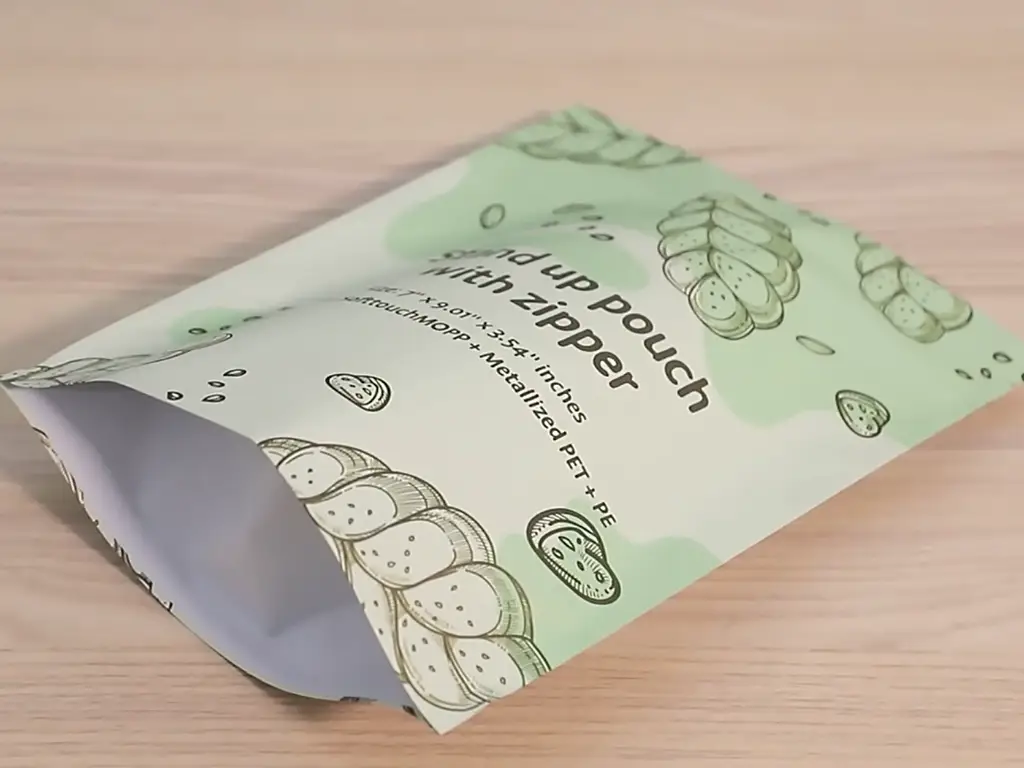
Color Psychology in Packaging
The selected color should be aligned with the product category and intended audience. In terms of food, warm colors like red and orange are appetizing while cooler tones like blue and green suggest cleanliness and calm, making them appropriate for supplements and personal care products. Always test colors with the intended stand-up pouch materials. Coloring with a white ink layer, white film, or clear film will make them appear differently. Intention matters with color use. Too many colors, or poor contrast, will attract confusion instead of attention.
Typography and Information Hierarchy
The choice of font influences the brand image as well as readability. Core information such as product name, weight (e.g. fluid ounces), and benefits should be written using clean, sans-serif fonts, whereas decorative fonts can be employed in small amounts to inject character. The main hierarchy should be followed with the size and weight of the text, leading the reader through the top to bottom of the page logically. This is essential to good typography, particularly in the case of the smallest formats such as the smallest pouch where space is at a premium.
Effective Use of Negative Space
Whitespace or negative space adds elegance while enhancing readability. Clean space helps in improving the visual impact of central elements and helps to avoid looking cluttered. Proper spacing also guarantees that functional elements, zipper closures, bar codes or QR codes are unobstructed and can be scanned. When designing a stand up pouch, the balance of functional and aesthetic elements should be preserved, rather than treated as an afterthought.
Photography: Lifestyle vs. Product Focus
Imagery ought to convey brand values and showcase what the consumer is purchasing. While product photographs offer transparency and establish expectations, lifestyle images evoke emotion and provide context. Both have their place, but whichever you choose, ensure they are professionally lit and color-accurate for your print job. If the product or its clear windows showcasing its contents are to be featured, avoid using deceptive imagery.
How to Design Your Own Stand Up Pouch: Tools and Resources You Need
When you intend to create customized pouches on your own, you can enhance efficiency and the end product with the appropriate tools and resources. Adobe Express, Canva, Packlane, and Packly are online design tools that have simple to use interfaces and ready-made templates-perfect to sketch out an idea on or create a presentation in the initial phases of the product creation process. To be more flexible and customizable, it is better to use professional software, like Adobe Illustrator or Photoshop. The tools favor exact print requirements, CMYK color modeling, layering, and special effects such as white ink layers, spot UV, or matte finishes and are ideal for users with strict brand guidelines. Either before or in the design stage, make sure and request samples or prototype packs from your manufacturer so you can test the texture of materials you use, zipper closures, heat-sealing ability, and color accuracy to be sure that your design is not only aesthetically pleasing but also practical. The majority of packaging manufacturers also offer dieline templates specific to the pouch type you choose, which will aid in reducing formatting mistakes and cut costs of communication. The end objective is to develop a design that is both aesthetically matched to your brand and commercially viable. What your mockup looks like should be exactly what it looks like on the shelf.
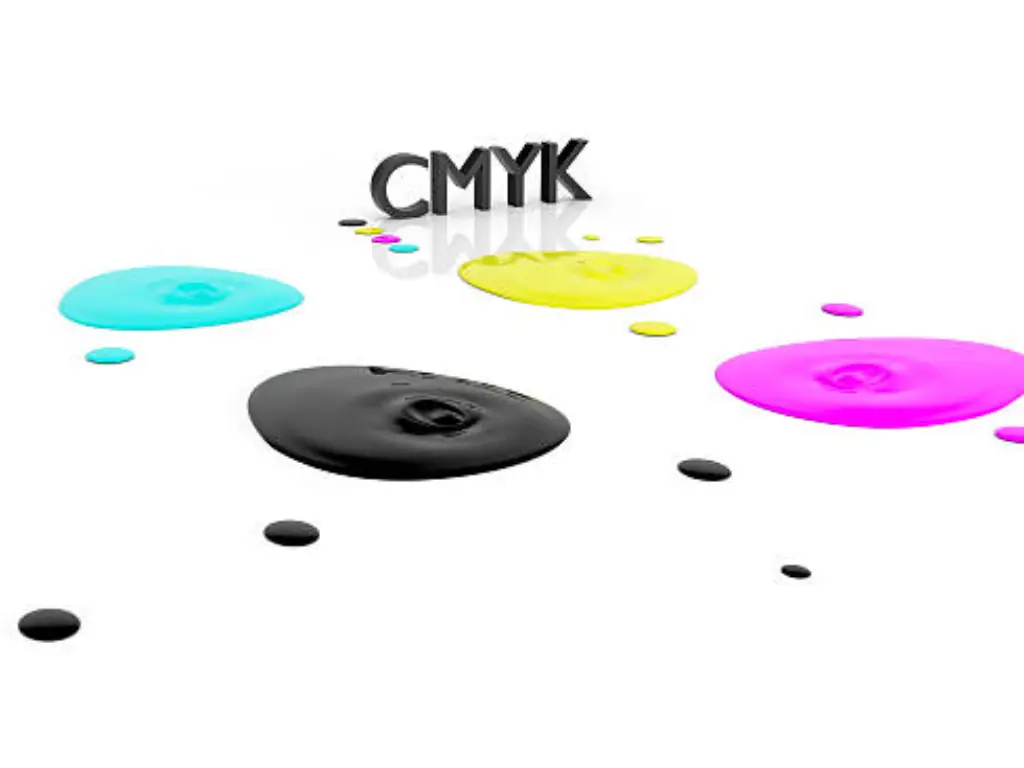
Stand Up Pouch Design for Different Industries
It is critical to tailor the design of the stand up pouch to specific industries to enhance and meet regulatory requirements for functionality and compliance to maximize consumer appeal.
- ● Food and Snacks
Food products need to be kept in food-safe containers. They should be made of waterproof and moisture-resistant material, also should have a good oxygen barrier. For Dry snacks, grab and go packages with resealable zippers and tear notches improve convenience. Windows enhance transparency. QR codes can be used to link to nutritional info, sourcing, or even recipes. Overall, it should display the product name, flavor, weight, and certifications such as gluten-free or organic.
- ● Coffee and Tea
These products are especially sensitive to moisture, oxygen, and light. Use of high barrier materials such as foil laminates and PET is common. They are also used with degassing valves to enhance freshness in roasted coffee. Designs for the packaging are usually minimalistic. Use of matte or soft touch finishes is also popular. The roast level, origin, and net weight should be highlighted with clear typography. For premium products, embossing or spot varnish boosts shelf appeal.
- ● Cosmetics and Personal Care
This type is aimed at a pristine, high-quality appearance. Resealable closures are common with multi-use products such as scrubs or masks, with glossy or white film materials. The packaging should withstand temperature changes and humidity. Irregular forms, the use of metals, or soft-touch finishes contribute to the perceived value. Labelling of ingredients, usage as well as shelf life should be clear to ensure compliance with the consumer and regulatory requirements.
- ● Pet Food and Treats
The most important thing is durability. Pouches should be strong and not prone to punctures to hold heavier products such as kibble and pet food accessories. Transparent windows allow the pet owners to see what is inside, and batch codes or barcodes give the audience trust. Designs also prioritize balanced friendliness and health-focused messaging. Convenience when storing food pouches is also provided by resealable features along with strong gussets.
- ● Supplements and Health Products
Supplements require moisture, UV, and oxygen high-barrier protection. Food-safe materials are also a requirement along with strong seals for lasting shelf life. Design must say trustworthy, think of soothing colors, clear fonts, and minimalistic designs. The labeling needs to include dose, benefits, certifications, and legal disclaimers. QR codes linking to lab tests or sourcing info are increasingly common.
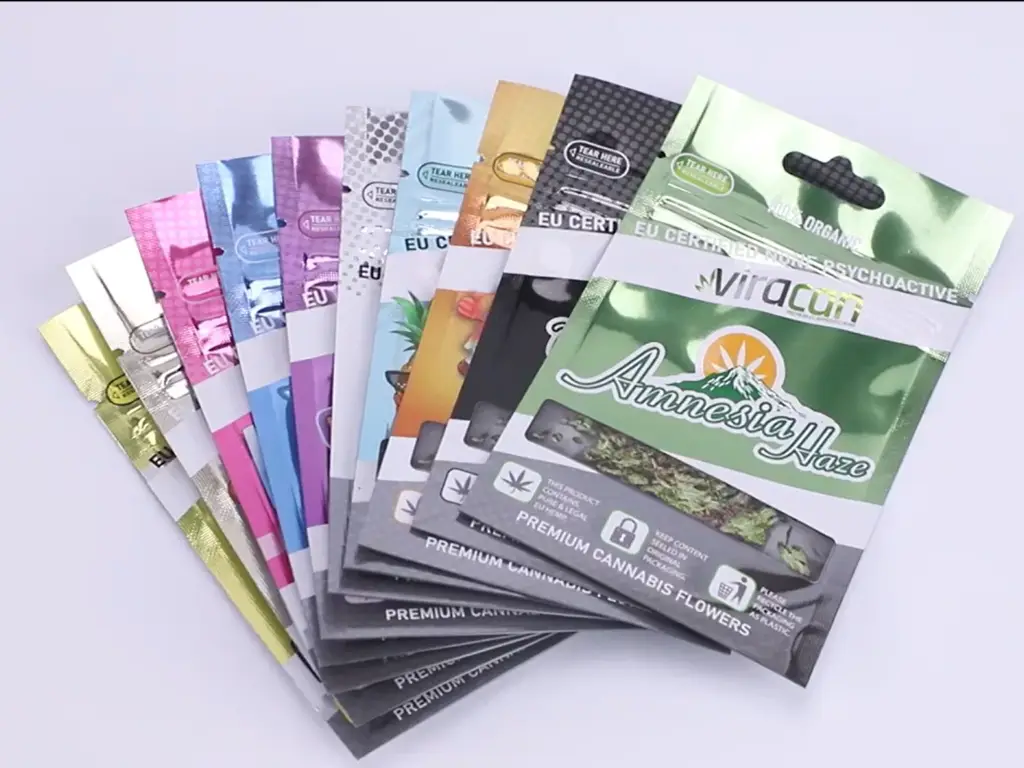
Common Mistakes to Avoid in Stand Up Pouch Design
While designing the stand-up pouch, paying closer attention to minute details is crucial to avoid poor shelf performance, production problems, or customer dissatisfaction. Here is a concise outline of the most frequent oversights and how to prevent them, as highlighted in the specs.
| Mistake | What It Looks Like | How to Avoid It |
| Too Much Information | Overloaded with text; consumers can’t identify key info at a glance. | Prioritize product name, liquid volume (e.g. fluid ounces), and 1–2 main benefits. Use icons to simplify claims. |
| Low Contrast & Poor Fonts | Text is hard to read, especially on clear film or at small sizes. | Use high-contrast colors and legible fonts. Add a white ink layer behind text when printing on clear film. |
| Misleading Product Visuals | Images don’t match the actual product; poorly aligned clear windows. | Use accurate lifestyle or product photography. Align windows with the product’s shape and exact placement. |
| Ignoring Functionality | No zipper closures, quick tear notches, or hang holes; pouch fails in real use. | Include functional features based on product type and use-case (e.g. home freezer, shelf display). |
How to Work With a Packaging Manufacturer
Collaborating with a packaging manufacturer is an essential stage in the design of the pouch. Even the best aesthetic idea will fall flat without dependable execution. If you’re creating a new product or looking to grow a product line, finding the right production partner will achieve best results in determining quality, value, and speed.
Establishing clear requirements is your first step. Set your product’s primary details first, like product type, intended pouch size, necessary materials (food-grade, high-barrier films, etc.), and any custom add-ons, like zippers, hang holes, or transparent windows. Also, give design files in the correct format so no delays or miscommunication arise; in this case, vector-based PDFs with bleeds and outlined fonts. Make sure your specifications are well documented so every step of the production process is smooth.
Ask for a free sample kit so you can evaluate the overall quality, color accuracy, and sealing integrity. It is best if you can conduct a simulated real-use scenario—freezing, shipping, and moisture exposure—to see how the pouch performs in real-world conditions. If you can, test heat sealing with your product to ensure proper materials and construction were used.
Make sure to ask about lead times for orders and the production minimum order quantity. Some manufacturers have great options for limited launches or custom SKUs, like using digital printing for smaller quantities. Others are not so flexible and require higher minimums, especially when using rotogravure or flexographic printing. Inquire about their print capabilities and if any other technical assistance is offered during the process—especially regarding accuracy for barcodes and QR codes.
The ideal producer goes beyond being a supplier; they become a partner in the production process. Efficient communication, proper testing, and a clear understanding of all parties’ expectations will make the pouch design process easier and allow it to scale better.

Baishen Pack: Your Trusted Partner in Premium Flexible Packaging
Since 2012, Baishen Pack has empowered global brands with high-quality custom flexible packaging. We specialize in food-grade, FDA/SGS/ISO certified materials, ensuring product safety and compliance. Leveraging advanced HP Indigo digital printing, we achieve up to 97% PANTONE® color matching for stunning shelf appeal. Our industry-leading turnaround delivers digital print orders in just 7-10 business days – significantly faster than competitors. With flexible MOQs starting at 500 units, we support all scales. Our rigorous in-house QC, including comprehensive barrier and durability tests, guarantees superior moisture, oxygen, and puncture resistance. Choose Baishen Pack for ultimate product protection, extended shelf life, and a decisive market advantage.
Stand Up Pouch Design Trends for 2025 and Beyond
Stand up pouch design is moving to clarity, functionality, and integration into digital as the nature of consumer expectations shifts. Keeping up with design trends is no longer a luxury; it has a direct effect on both shelf impact and brand perception.
- ● Minimalism and Transparency
Clean layouts, neutral color scheme, and succinct messaging are still prevailing. Minimal designs make the products look outstanding due to the lack of visual clutter and better legibility. Meanwhile, transparent windows are still popular, which enables the consumer to view the product inside it, which adds to the element of trust and product visibility. With clear film, make sure that you have good backing with white ink to allow legibility.
- ● Smart Packaging Features
QR codes have become an inseparable part, rather than an ornament. Brands apply them to connect to the sourcing information, instructional videos, or product certifications. Enhanced reality is also coming up that allows smartphone-based interaction. These are value-added features, particularly to the digitally active customer.
- ● Bold Typography and Custom Shapes
Big bold fonts are in style, particularly on larger pouch sizes. They are used to brand and be functional. At the same time, pouch shapes (die-cuts or asymmetrical profiles), which have been experimented with, are creating differentiation in competitive classes such as personal care or specialty food.
- ● Subtle, Authentic Sustainability Messaging
The design concepts have matured into eco-conscious design. Companies no longer employ green visuals; instead, brands now communicate sustainability through minimalist ink usage, simple prose, and through certifying bodies. Compostable laminates and recyclable films are now widely adopted to meet sustainability criteria without shattering a design’s aesthetics.
Conclusion
Creating your own stand up pouch is a clever combination of brand, utility, and consumer anticipation. All the details, such as the material choice, the pouch design, and the effective design stage of your pouch creation, the quality of prints, or the possibility of a resealable zipper or a QR code, can affect how the product will be perceived and how it will be used. An effective pouch can both preserve the product and increase shelf appeal, as well as correspond to values such as sustainability and transparency. With packaging developing into one of the most important brand-contact points, the pouch is being transformed into a new form of communication.

